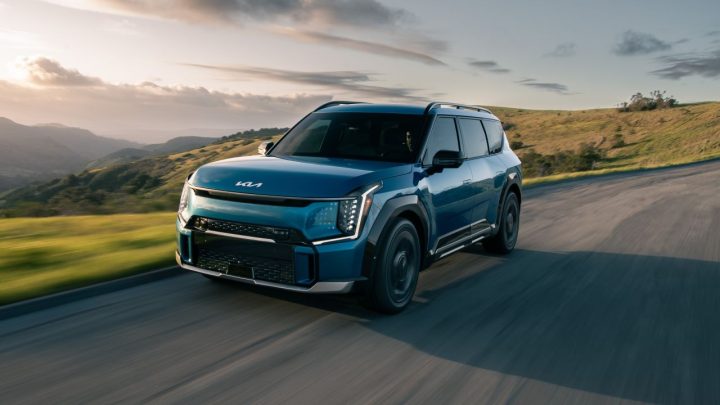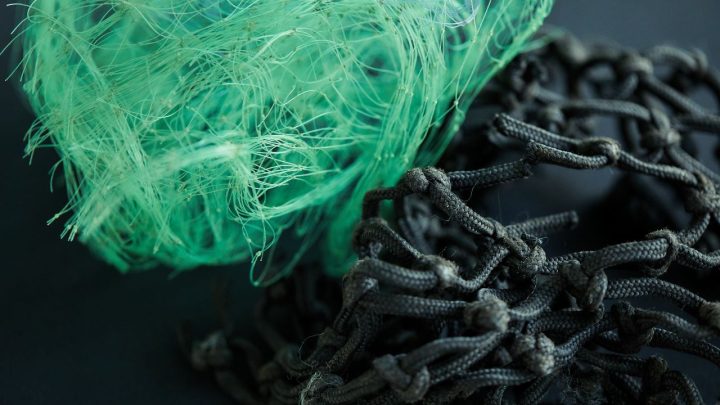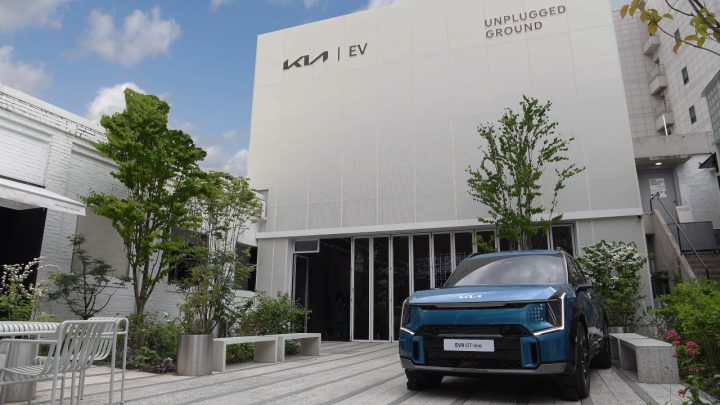
Sustainability and protecting Mother Nature aren’t just about engines and powertrains. Kia has gone down to the smallest of things to protect the environment and their flagship electric vehicle, the EV9, is making sure that it helps in reducing waste all while still bringing in the best to consumers.
EV9, as well as other Kia models, check 10 must-have items for Scalable Sustainability
Table of Contents
Part of Kia’s Design Sustainability Strategy is the planned phase-out of the use of leather and even plastic in their vehicle production lines. In their place will be new bio-based materials which will ultimately help the brand to reduce short-term carbon emissions and achieve carbon neutrality across its operations by 2045. For now, a 10-item checklist guides designers and production, and specifically for the EV9, this is what they use to maintain their clean and green push.

Photo: Kia
1. Bioplastic
Bioplastics are an exciting and innovative type of plastic that can be produced using a variety of renewable biomass sources such as vegetable oils, corn extract, sawdust, and sugar cane. The use of bioplastic not only helps lessen reliance on fossil fuels but it also offers the added benefits of diversified sourcing and reduced exposure to unwanted chemicals.
Adding to its sustainability, bioplastic is also versatile and durable enough to be used in various components of the car’s interior. From the dashboard and console to the pillars and garnishes, you can find bio-plastic incorporated throughout the EV9’s design.
2. Post-consumer material (PCM) plastic
Post-consumer material (PCM) plastic is precisely what it sounds like. It is plastic made using recycled material from existing products rather than new, “virgin” pellets.
This green process has noted benefits that span the entire product lifecycle. It significantly reduces the amount of plastic waste that ends up in landfills or pollutes the environment, first off. And second, post-consumer recycled plastic also helps to conserve non-renewable resources by reducing the need for virgin materials to be used in the creation of new products.
One of the key areas where PCM plastic has been incorporated into the new Kia EV9 is the door garnishes. Kia’s integration of post-consumer recycled plastic into the EV9’s construction is a proactive step that contributes to waste reduction and landfill regeneration.
3. Bio PU
In its efforts to phase out leather, Kia identified Bio Polyurethane (PU) as the optimal solution because of its potential to reduce overall carbon emissions and incorporate plant-based components, which ultimately contribute to a more sustainable balance.
Bio PU not only offers a sustainable alternative, but it also delivers a comfortable seating experience. Carefully designed to provide excellent support, cushioning, and durability, as well as a soft and breathable feel, Bio PU can be found in the seats and interior coverings of the new Kia EV9.

Photo: Kia
4. Recycled PET fabric
Among the most easily recycled plastics in the world, Polyethylene terephthalate (PET) is ideal for various sustainable applications from water bottles to clothing.
With good resistance to impact, moisture, and solvents, it is the ideal fabric with which to cover exposed surfaces within the car. Kia has taken this one step further by using recycled yarn to partially compose its PET fabric, ensuring both sustainability and durability in the interiors of the new Kia EV9.
This material can be found in numerous areas of the EV9’s interior, including the seats, headliner, sun visor, garnish, and headrests. Notably, each EV9 incorporates at least 70 recycled bottles, highlighting the brand’s commitment to reducing waste.
5. Recycled PET carpet
Apart from its extensive use in the rest of the cabin, Kia utilizes 100 percent recycled PET in the creation of its standard carpets. Going a step further, the brand offers the option of a portion of this material coming from recycled fishing nets.
Not only is this an innovative use of waste but it also addresses the serious problem of discarded and lost fishing nets that devastate marine life around the world. Around 640,000 tons of fishing gear ends up in the oceans each year which results in the deaths of countless marine creatures, including sea birds, whales, and seals.
By capturing and recycling ghost nets, Kia is not only addressing the entry of plastic particulates into the water as they break down but it also moves towards limiting the impact they have on the crucial ecosystems of our oceans altogether.
The cabin floors of the new Kia EV9 feature carpets made from recycled PET and fishing nets.
6. Bio PU foam
Polyurethane (PU) foam is a versatile material with applications ranging from sports gear to space shuttle insulation. Its excellent durability and compression characteristics also make it an ideal choice for cushioning in a wide range of applications, such as furniture, bedding, and footwear.
Made with the help of natural oils, Kia’s Bio PU foam offers the resilience and suppleness of standard polyurethane with a reduced impact on the planet.
Bio PU foam can be found in the headrests of the new Kia EV9.
7. Bio paint
Bio paint is more sustainable than alternatives made using crude oil and reduces chemical waste normally derived from the manufacturing process.
Kia’s bio paint is made using rapeseed oil, a vegetable oil obtained from rapeseed and commonly used in the food, biofuel, paint, cosmetics, and pharmaceutical industries.
Bio paint can be found on the door switch panels of the new Kia EV9, minimizing environmental impact without compromising on quality.
8. BTX-free paint
Kia has proactively addressed the harmful environmental effects associated with the use of the combination of benzene, toluene, and xylene (BTX) by adopting a sustainable solution: BTX-free paints.
By using BTX-free paints in its models, the brand offers the same high-quality protection and finish that customers expect, while simultaneously minimizing the use of polluting chemicals.
The new Kia EV9 features an interior that is adorned with BTX-free paints almost throughout, except for the door window switch panel, which is coated with bio paint In line with its commitment to sustainability.

Photo: Kia
9. Recycled PET yarn
Polyethylene terephthalate (PET) again demonstrates its versatility, with the yarn used for certain cabin applications in Kia’s models made from 100 percent recycled PET bottles.
More than 70 recycled PET bottles are used across all of the recycled PET items found in the new Kia EV9.
Among its many applications, the recycled PET yarn takes center stage in the seat stitching, adding an extra layer of sustainability to the EV9’s interior design.
10. Recycled PET felt
Felt made with recycled PET bottles is both soft and durable, key qualities when used in an environment that can be used to transport everything from luggage to pets.
PET has the added benefit of offering good acoustic absorption, reducing the transmission of sound from the rear of the car to the rest of the cabin, and helping to maintain a driving experience that feels as good as it looks.
Recycled PET felt can be found on the luggage board of the new Kia EV9.
–

Photo: Kia
These are not at all unheard of for the brand. As early as 2014, the Kia Soul EV had already started using of bioplastic and sugar cane bio-fiber. As far as integrating sustainable materials into its products goes, Kia has continued to pursue sustainability in its products, with the current range of plant-based components and the use of recycled PET and discarded fishing nets in the production of its fabrics and carpets.
The 10 must-have sustainability items that you see here will inevitably make it into Kia’s new model lines, and it’s already begun with the EV9.
Who says being environmentally friendly can’t make you look good? Kia and the EV9 strongly beg to differ.




